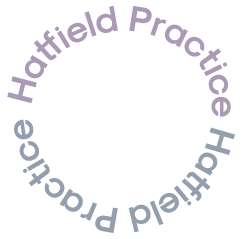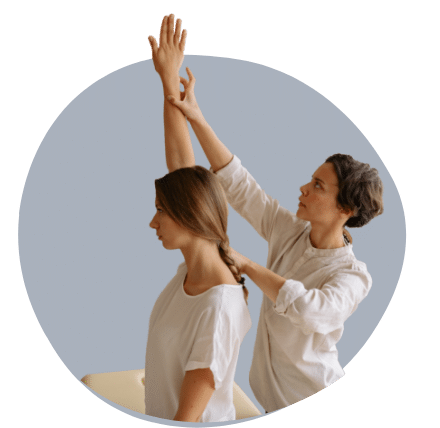Osteopathy
Osteopaths believe that the health and well-being of an individual depend on how well the skeleton, muscles, ligaments and connecting tissues work in harmony.



Why Osteopathy?
Osteopaths work by improving the bodies ability to function. Osteopaths use hands-on techniques, including touch, physical manipulation, stretching, and massage, to increase the health and mobility of the body. Osteopaths ease muscle tensions, enhance the blood and nerve supply to the spine. As the body improves, muscle and joint systems improve, performance, flexibility and pain ease, and people feel better. Once the body is working well, pain and illness will often disappear.
Our Approach
Osteopaths believe that the health and well-being of an individual depend on how well the skeleton, muscles, ligaments and connecting tissues work in harmony. Osteopathic treatment assists healing by improving blood and lymphatic flow, enabling the immune system to function more effectively. Osteopaths believe that blood flow is essential as it washes away inflammation and brings oxygen to the tissues. The lymphatic system washes and cleans the body, effectively fighting disease via the immune system. In short, Osteopaths stimulate the bodies natural healing mechanisms by improving the function of the bio-mechanical( bones, muscle and joints) systems.
What to expect
Your first consultation can take anything from 30 mins up to an hour, including:
For many patients that attend, the goal is first to relieve pain. Osteopaths work by removing the barrier(s) that prevent the body from using its innate healing mechanisms. The Osteopath may help correct faulty posture or habits by strengthening muscles and allow people to become aware of patterns that lead to problems and pain. Osteopaths aim to prevent a recurrence of the original injury through awareness and education. Osteopathy is designed to improve your health and quality of life by reducing pain. The Osteopath will make you feel at ease during your consultation and explain everything as it happens. Feel free to ask questions if you are unsure or have any concerns.
- Deep soft tissue release techniques and Osteopathic massage – helps to relax tight, painful or damaged muscles.
- Joint and spinal Articulation/mobilisation – Joints are passively moved through their natural range of motion. Improves mobility.
- Deep soft tissue release techniques and Osteopathic massage – helps to relax tight, painful or damaged muscles.

Osteopath Treatment
- Medical Questionnaire
For many patients that attend, the goal is first to relieve pain. Osteopaths work by removing the barrier(s) that prevent the body from using its innate healing mechanisms. The Osteopath may help correct faulty posture or habits by strengthening muscles and allow people to become aware of patterns that lead to problems and pain. Osteopaths aim to prevent a recurrence of the original injury through awareness and education. Osteopathy is designed to improve your health and quality of life by reducing pain. The Osteopath will make you feel at ease during your consultation and explain everything as it happens. Feel free to ask questions if you are unsure or have any concerns.Medical Questionnaire
- Clinical diagnosis and treatment plan
Once the combined information is gathered and a clear understanding is reached, the Osteopath will formulate a treatment plan. The Osteopath will then carefully discuss your treatment options/methods, along with your agreement treatment goals. The Osteopath may look to improve both your current injury and any long-standing biomechanical problems. A long term approach means there is less chance of the same problem reoccurring over and over.
- Treatment Room
During your first consultation treatment, the Osteopath will spend time looking at your presenting condition. The first examination will help the Osteopath understand how your body has uniquely adapted to the emotional and physical stresses that life brings. The analysis helps the osteopath identify areas of your body that are most likely to be causing or maintaining your pain. Clinical checks like taking blood pressure, reflexes, and neural (nerve) tests are often performed for clarity. We will also use gentle movement techniques to palpate and assess any spinal joint or restrictions within your muscle, ligament and skeletal system. Your examination findings and medical questionnaire helps the Osteopath to form a clear and precise medical diagnosis before any treatment begins.
- Aftercare and follow up
The Osteopathic treatment plan may involve specific deep muscle massage, joint mobilisations, actively resisted muscle stretches, manipulation, posture correction. Sometimes electrotherapy or Acupuncture is used. People often feel much better after treatment. It is usual also to receive further advice and a functional exercise plan. We will set goals that are rewarding and attainable.
Who we treat
Osteopathic treatment is suitable for people of all ages, and every treatment is designed individually for each patient.
There are gentle Osteopathic techniques suited to babies and children through to those with medical conditions that affect the joints, muscles, disc and nerves. Osteopathy can also be direct and firm, such as the more vigorous direct techniques used in healthy adults. Osteopaths provide rehabilitation, speed recovery, strengthen muscles and increase the flexibility of both joints and nerve pathways. Many are also trained to promote a mind, body and spirit approach. Essential when stress is the predominant factor in the presenting condition. Osteopathy isn’t painful, although it’s not unusual to feel stiff in the first couple of days after treatment. Painful or inflamed areas are treated sensitively, and the Osteopath may use a gentler approach. Osteopathy is helpful for patients with wear and tear and arthritis. Osteopathy is great for easing restricted spinal joints, sore necks, stiff hips and certain types of headaches. Osteopaths have similarities to Physiotherapists and prescribe exercises and use electrotherapy.



Osteopaths believe that if the biomechanical parts of the body are working in harmony, then illness and disease processes are much less likely to manifest. Osteopaths restore your body to a state of natural balance, often without the use of drugs or surgery.

What Our Patients Say
- Vera, Herts
- Colin, Herts
- Sarah, Herts
- Denise, Herts
- John & Kay, Herts
FAQ's
There is a car park at the front of the practice or one-hour free parking just across the road on Ground Lane.
You may bring shorts, loose clothing, or we can use towels if you feel more comfortable. Please ask as we want your visit to be a pleasant one.
Please let us know you require an urgent appointment, and we will do our utmost to see you as soon as possible. Please tell the reception staff about your situation.
Their doctor refers many patients to the Practice. Unless you need to, it is unnecessary to see them first; however, if you wish to claim on your Health Insurance, some companies require a doctor’s referral as with any other specialist or consultant.
Anyone practising as an Osteopath is required, by law, to be registered with the General Osteopathic Council (GOsC), established by The Osteopaths Act, 1993. So patients now have the same safeguards as when visiting their Doctor or Dentist. Osteopathy is safe and effective.
We are committed to continuing professional education. As a practice, we review each other’s work.
There is no fixed amount for an appointment, although they are generally in the region of 30 to45 minutes. Conditions vary considerably in the amount of time they require, and we are committed to achieving the best for you. Remember that what is performed inside the consulting room is only a proportion of the osteopath’s work. It is necessary to write detailed notes, communicate with GPs, review hospital X- rays and scans, write reports, liaise with staff and upgrade our skills.
For a list of the current fee for all services, please click here. They can also be found at the reception desk. Fees are payable at the time of your visit by cash, cheque or credit/debit card.
We are very aware of the relative and absolute contraindications to Osteopathic treatment, and we are trained to recognise what falls outside their competence.
Osteopathic treatment is non-invasive, usually gentle and generally painless. It relies much on passive movements and the mobilisation of joints and soft tissue such as muscle, lymphatic tissue and fascia.
It aims to restore mobility, improve or restore function in restricted joints, and the surrounding soft tissues to reduce spasm and oedema.
Problems with hypermobility may also be amenable to Osteopathic treatment, which aims to remove abnormal stresses and strains from the affected area.
In short, many techniques can be used by the Osteopath. These are often tailor-made for you and your specific set of problems/symptoms.
Osteopaths work with their hands using a highly trained sense of touch; treatment will often consist of soft tissue massage, gentle passive mobilisation techniques and specific joint manipulation, sometimes ultrasound and or electrotherapy and specific exercises.
No, but it can certainly help alleviate many of the symptoms and pain associated with these common problems. Several techniques aim to improve function and reduce the pain and discomfort of the muscles, ligaments, and joints. Osteopaths can also advise on how to help manage this problem at home or in the workplace.
The idea of putting something back in place is a misconception. Spinal joints out of place would present as a severe injury and would undoubtedly mean hospitalisation rather than a visit to an Osteopath! Within the Osteopathic understanding, joints become restricted within their normal range, often due to chronic overuse or joint swelling, restricting function. Manipulation helps to release spinal reflexes and improve blood flow and quality/range of movement.
Manipulation is not inherently painful. Some discomfort will occasionally be experienced when an injury is treated, even with gentle soft tissue techniques. Your Osteopath will be very sensitive to your symptoms and not proceed with a technique if there is undue discomfort.
It is wrong to assume that you will always have manipulation whenever you go to an Osteopath. Many successful treatments can be conducted without its use. Osteopaths usually keep their patients informed as to what they are doing as the treatment progresses.
Side effects are generally rare; you may experience tiredness or soreness for a few days afterwards, but this will subside quickly. Osteopathy is a very safe and effective form of treatment, and most patients feel subsequently better for it.
If you have new problems or concerns between treatments, we would rather phone us on 01707 888229 rather than be anxious or suffer in silence.
If the pain is severe, an osteopath may want to see the patient again within a few days. Although, in general, treatments are spaced roughly one week apart, although they may space as the condition improves.
Your recovery rate will also depend upon several other factors, including your age, general health, sensitivity to treatment and activities in your life.
Some patients feel that they benefit from an Osteopathic MOT which may require visits on an occasional basis.
Once again, this depends entirely upon the problem, and your Osteopath will advise you on the need for exercises and maintenance treatment.
The majority of medical insurance companies cover Osteopathy. The Hatfield Practice enjoys specialist status with Bupa and PPP. Most now refund part or all of patients fees; some have special conditions or require that you tell them at the onset. It is best to check with your insurers first, sooner rather than later, as individual policies may have exemptions. If you do have complimentary health cover, then you should obtain an authorisation number.


